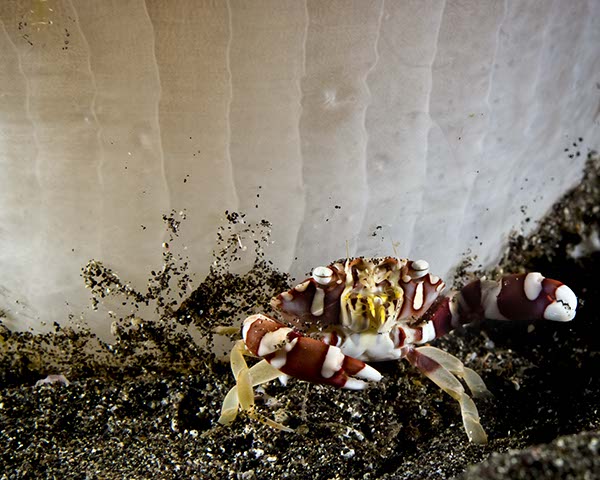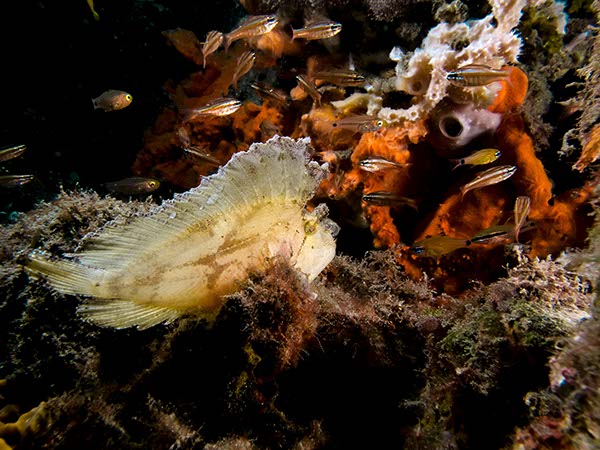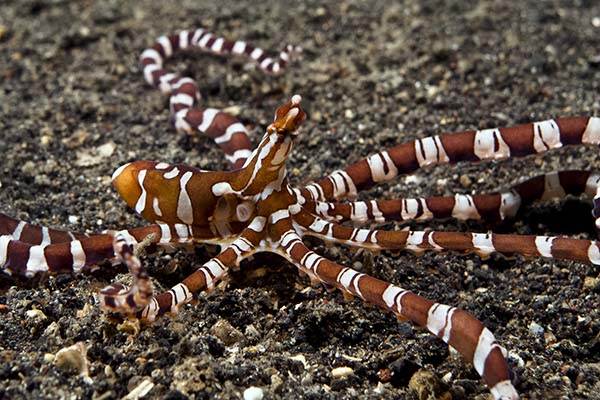Diving Costa Rica – Playa del coco and Bat Island
August 19th, 2014
I live and work in New York City, yes the greatest city in the world the one that never sleeps. Over the years I’ve met very few people who were not totally excited about visiting NYC. The hustle and bustle of the city streets, its famous urban skyline, endless iconic attractions, arts and cultures, supreme luxury and some of the best food anywhere all count toward New York’s universal appeal. After few years of living here, one learns the ways of true NY’rs and realizes that the real gems are hidden in places we least expect them; A windowless stained black door down a staircase full of boxes is the entrance to one of the best clubs downtown or some of the most creative food is served out of trucks parked next to Brooklyn museum. New York sometimes stares you in the eye while going unnoticed and as it turns out same rule applies to some dive destinations.
Before booking my trip to Sulawesi and Lembeh I did all the research I could to be prepared. I learned about the dark volcanic sand and the great Super Macro opportunities and added some diopters and wet lenses to my gear. Reading about snoots and other makeshift underwater lighting techniques I fitted my strobes with an adjustable cone and mounted a focus light for videos. Before arriving to Lembeh I interrogated anyone who was willing to talk to me about what to expect and tips on where to go and what to look for. I started several online discussion treads asking for dive shop recommendations and places to stay (I’ll leave the details for a separate entry). None of the above came even close to preparing me for what I was about to experience and for that I’m very thankful.
As our air-conditioned car made its final approach toward the boat landing in Bitung I got first glimpse of the mile wide strait and the cone like mountains flanking it. The general sense is of a very active port, at times resembling a graveyard for old rusty ships. Rubbish and plastic bottles float freely near the shore and the water is murky and brown. On the surface it has all the elements that anywhere else would have led me to turn back. But just like in NY, a local guide and patients become very handy in Lembeh.
A short boat ride delivered me and my overweight equipment bag from Bitung directly to Two Fish divers’ front yard. Many visit this part of Sulawesi with the intention of including Bunaken and Lembeh as part of the same trip and Two Fish Divers, operating at both locations, make that an easy task. Danny was standing on the shore with her typical welcoming smile and walked me to the Bar area where my cold drink was sweating. The resident dogs size me up and down and let go after a few sniffs. After a week in Bunaken I smell of burning wood and salt water enough to pass their inspection. I take in all the details while fixated on some familiar faces smiling aboard the boats just docking in after the morning dives. I fill the paper work with one eye on the dock trying to eavesdrop on excited conversations about different sightings.
Bright blue skies of 20 minutes ago are now covered with heavy clouds and rain drops rumble as they hit the wide tropical leafs. Over the next week I’ll have a new appreciation for tropical rain. In most destinations, warm or cold, rain means lower visibility and colder boat rides to and from the dive site. The runoff alone is an incentive to leave the underwater camera behind and enjoy this one by taking only mental pictures. Soon its apparent that rain is an integral part of every day in Lembeh. Towered by volcanic mountains from both sides many clouds dump their load as they pass through the strait. It’s neither cold nor warm and has little to no effect on visibility or access. By the time I leave the island rain will be barely noticeable.
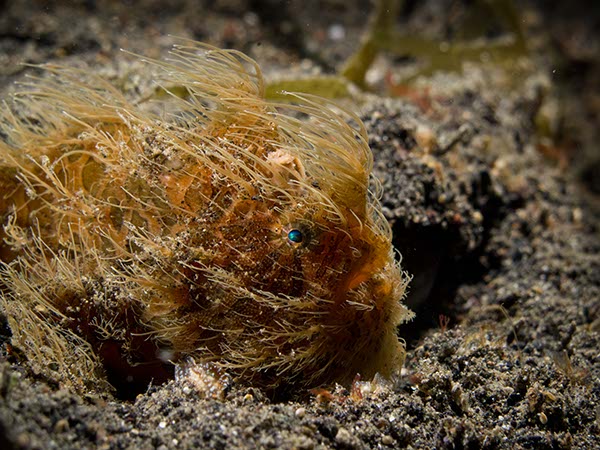
After lunch I meet Matt and Danny to talk some more logistics and they gracefully arrange for all my needs. We then watch an introductory video to Lembeh and muck-diving etiquette and I get my fist real glimpse of what awaits me filled with excitement. I need to book the afternoon house reef dive and practice! The following days are a blur of content, amazement and appreciation. A well organized and well run dive shop can make or break any trip. Relying solely on rental gear and having set expectation of how much material I want to come back with created a new kind of dependency on my part. The crew are more than accommodating, they anticipate and guide, creating a partnership without which my experience could not have been so positive.
Days start, typically at the breakfast table, where the kitchen crew caters to all guests in a span of 30 min (Sleep time is precious). In the background tanks clank as they are loaded to the boats along with our gear baskets and refreshments. Shortly after we’re all crowded at the edge of the water, inspecting our gear and test firing our strobes, itching to leave. Most sites are within 10-15 min boat ride leaving just enough time to put on the wet suit and defog the mask. In a place where one wants to come back to the same site over and over again, there is no shortage of dive sites and those further away are best kept for the next visit. Most sites are no deeper than 25 meters but depth has a new meaning when visibility is so low and the creatures are so minute. Here is a link to my latest gallery of Underwater Images from Lembeh Muck diving capital of the world
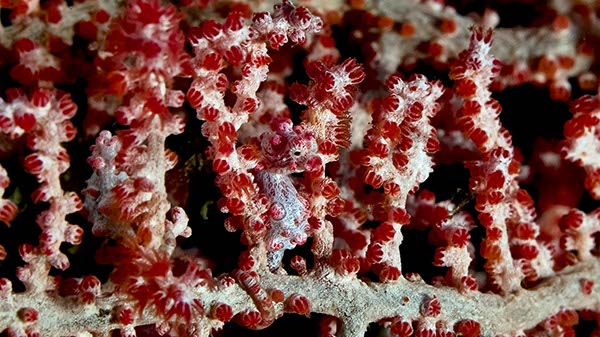
We back roll in groups of 1-2 divers per guide and decent without much ceremony. For days to come I’m filled with the same anxiety when we first equalize; The landscape is barren, devote of any distinguishing features and in most cases looks desolate like a deserted town in a black and white western. Rubbish, mostly packaged food, floats over and under the surface provoking a new understanding of the term foot print. The first few moments of each dive while our eyes adjust to the light and everyone re-learns the unpleasant consequences of fining too close to bottom, demand adjustment and reflection. Soon the tank banging starts and before we know we’re bunched in hotspots with our strobes firing. I’ve been looking for the appropriate words to describe the local guide’s ability to navigate, track and identify the smallest of creatures in these waters and am still coming short. There is no magic to what they do, though this is the prevailing impression. They know the terrain and navigate it based on repeated visits. They use landmarks as simple as a twig or a wood plank to mark the last spot a Hairy Frog Fish or Blue Ring Octopus was spotted. They observe behaviors and understand habitats.
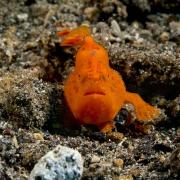
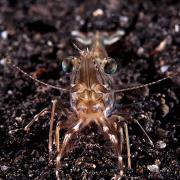
Combining all of the above with a genuine desire to help and keep us happy turns these guys to magicians (Sorry Gal’s, sadly I did not come across any female local guides during this trip). By the time we’re ready and settled near the bottom emerging from our reflection-clouds they are hard at work spotting “pre-ordered” creatures. A single clink on the tank gets my attention and their calm demeanor reminds me to move in slow motion or we’ll all be waiting for the soup to clear. Over time I develop my own NASA like procedures taking into account how long I’ve been photographing the current subject, how to leave the current location w/o stirring the bottom, how stationary is the next subject my dive guide is pointing to and how much propulsion do I need to come to complete stop next to it – Just like docking the space shuttle or fueling mid air. As I’m engrossed in positioning the strobes and finding focus my guide is off spotting the next attraction. From time to time we hit the jackpot and spot what was ordered by divers on their last day of diving or spot several rare species in the span of a single dive. I shoot like a green soldier, under fire for the first time, forced to stop only to reload which reminds me that I have to move on and yield to those behind me.
Back on the boat it’s barely 09:30 and I already have a full day’s worth of excitement and a full memory card. The boat crew laughs uncontrollably as they see the grin on my face and greet me with a warm drink. The noise levels on the boat increase as more of us surface and finally express in words what our frantic hand gestures failed to do. By the second dive I’m more focused and my mental wheels are better greased. I’m intending to do even better with air consumption and buoyancy control and hope to be rewarded in kind. I have to remind myself that memory card capacity and battery life are limited and try to make each frame count. Before docking back at the resort for lunch we pass other boats filled with divers from nearby resorts. The captains exchange few words over the laud engines and I can see the afternoon plans changing. During afternoon, evening and night dives the boats are slightly lighter. Some prefer spending the afternoon napping before the night dive and others can’t peel themselves from the comfy wide sofas in the bar once settled in. Emerging from my first night dive I’m speechless it’s not till tomorrow’s morning dive that I fully realize the diversity and frenzy of life I witnessed after dark. Back in my room, exhausted from the day I decide to skip dinner to view today’s “catch” on my laptop before the local palm liquor gently knocks me out.
Scuba diving is a bug or more accurately a condition and underwater photography is one of its potential complications. Once we get the bug we tend to go to the furthest corners of the world to see what may not be there tomorrow. And in doing so we come in contact with others suffering from the same condition. So the type and nature of people one meets during a diving trip is a good indicator for fantastic destinations. It was a comment made by my buddy after one of our night dives that sums Lembeh for me – “I’ve been diving for two decades and never seen anything like this!” Every dive holds the promise of encounters of the third kind. And just like in NY you can stare at things for long not realizing what they are. It does not take a marine biologist to wonder about and be amazed by the diversity of life under water. Lembeh puts an abstract and bizarre twist on underwater encounters and can be an endless source of inspiration. A true Jurassic experience not only for underwater photographers or scuba enthusiasts but anyone attracted to nature.
So what are you waiting for?
